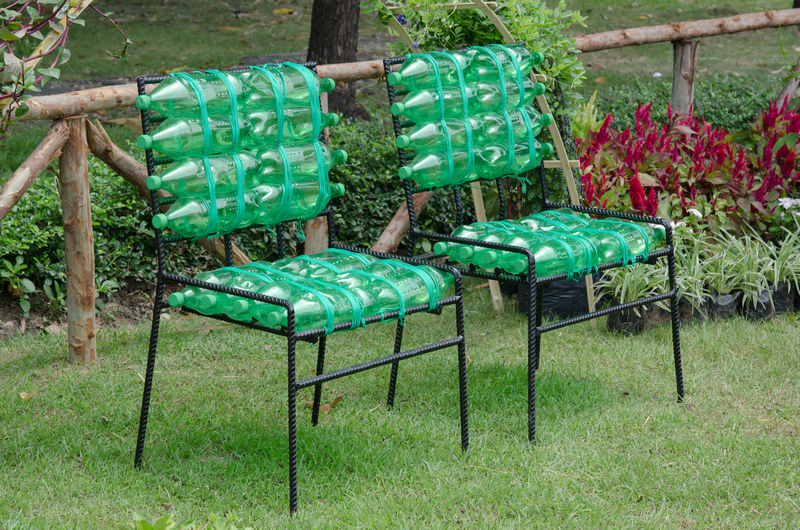Creative Tips for Reducing Impact When Throwing Away PPE
Personal Protective Equipment (PPE) has become an everyday essential for many, particularly in healthcare settings and during public health crises. However, the widespread use of single-use PPE such as masks, gloves, and gowns raises significant environmental concerns. The challenge lies in minimizing the ecological footprint caused by PPE waste while maintaining its protective benefits.
In this comprehensive guide, we'll explore a variety of creative tips for reducing impact when throwing away PPE. From environmentally friendly disposal methods to innovative reuse and community initiatives, discover actionable strategies to help protect both public health and our planet.
Why PPE Waste is a Pressing Environmental Issue
The rise in PPE usage, essential for infection control, has inevitably led to a surge in waste. Most PPE is made from plastics like polypropylene, which take hundreds of years to decompose. Improper disposal often leads to PPE ending up in landfills, oceans, and urban environments, posing serious threats to wildlife and ecosystems.
Understanding the environmental impact is the first step in making more responsible choices when disposing of PPE.
- Marine animals can mistake discarded masks or gloves for food, leading to injury or death.
- Microplastics from PPE break down in the environment, contaminating soil and water.
- Burning PPE in landfills contributes to air pollution and greenhouse gas emissions.

Top Creative Ways to Reduce Your Environmental Impact When Disposing of PPE
While some PPE will remain single-use for safety, especially in medical settings, that doesn't mean we're powerless. Here are innovative and eco-conscious tips for reducing the impact of discarding PPE efficiently and responsibly.
1. Choose Reusable Alternatives Where Possible
Opting for reusable PPE such as cloth masks or washable gowns can significantly reduce waste.
- Cloth masks: These can be washed and reused multiple times. Ensure proper sanitation after each use.
- Washable gowns and face shields: Select PPE designed for repeat use without compromising protection.
- Where appropriate, pair reusable items with disposable liners for safer cross-contamination control.
When using reusable products, always follow manufacturer instructions for cleaning and maintenance to ensure ongoing effectiveness and safety.
2. Upcycle PPE for Artistic and Functional Uses
Upcycling is a creative method for giving used PPE a new purpose, transforming what would be waste into something useful or beautiful. Some suggestions include:
- Art projects: Clean, non-contaminated masks and gloves can be integrated into sculptures, collages, or educational art displays about environmental awareness.
- Gardening: Latex gloves, after thorough cleansing, can be used as planters for seedlings or as ties for supporting plants.
- Organization: Face mask straps and elastic bands are handy for bundling cords or securing packages.
Note: Always use only uncontaminated PPE for upcycling to avoid health risks.
3. Participate in PPE Recycling Initiatives
Emerging programs and technologies are working to tackle the issue of PPE waste. Specialized PPE recycling schemes exist in many countries, transforming used masks, gloves, and gowns into new materials.
How to participate:- Check local government or hospital websites for collection programs.
- Some companies offer mail-back programs for bulk PPE waste, particularly useful for businesses.
- TerraCycle and similar organizations run initiatives for hard-to-recycle items including disposable masks and gloves.
An important note is that PPE used in medical settings may be classified as hazardous or biohazard waste and must be disposed of according to strict protocols. Never place contaminated PPE in standard recycling bins.
4. Organize Community PPE Collection Drives
Pooling resources and effort can magnify positive outcomes. Community groups, schools, and businesses can organize PPE waste collection events and ensure it is sent to proper recycling facilities or upcycling artists.
- Arrange regular neighborhood drop-off days for clean, disposable PPE.
- Collaborate with local recycling or art initiatives to give PPE a second life.
- Conduct educational campaigns about responsible PPE disposal in your community.
Involving the community heightens awareness and drives larger-scale environmental impact reduction.
5. Properly Prepare PPE for Disposal
Correct preparation of PPE before disposal greatly reduces its environmental and health risks.
- Ensure cleanliness: For PPE that is not contaminated with infectious material, make sure items are clean and dry before disposal.
- Cut straps or loops: To avoid wildlife getting entangled, always snip mask ear loops and glove fingers before discarding.
- Bag securely: Place used PPE in a sealed bag before putting in the trash to minimize risk of wind dispersal.
For healthcare PPE, always follow local hazardous waste guidelines for disposal.
6. Advocate for Sustainable PPE Innovation
The demand for safer and greener PPE is driving innovation. Support or advocate for the adoption of:
- Biodegradable masks and gloves: New materials like polylactic acid (PLA) and plant-based polymers mean masks that decompose in months, not centuries.
- PPE made from recycled materials: Some companies now offer face shields and masks made from recycled plastic bottles.
- Government or business policies: Push for institutional change that prioritizes sustainable procurement and disposal.
Choose suppliers who are upfront about their sustainability commitments. Your purchasing choices can drive industry-wide change.
Frequently Asked Questions on Responsible PPE Disposal
How do I know if my PPE can be recycled?
PPE made from materials like polypropylene, polyester, or latex can sometimes be accepted by specialist recycling schemes. Standard plastic recycling bins generally do not accept PPE due to contamination risks. Always check with your local authority or a dedicated recycling service for up-to-date guidelines.
Is burning PPE a good environmental solution?
No, burning PPE can release toxic chemicals and greenhouse gases unless done in a controlled industrial facility equipped with air pollution control technology. Never burn PPE at home.
Can I compost biodegradable PPE at home?
Some biodegradable PPE products can be safely home-composted, but only if they're certified for composting and have not been exposed to hazardous substances. For safety, many biodegradable PPE products are best processed in industrial composting facilities.
What if my area doesn't have PPE recycling options?
If no recycling programs are available, focus on upcycling, proper preparation for trash, and advocating for new local initiatives. You can also contact local officials to encourage the establishment of PPE recycling schemes.

Educational Strategies to Promote Responsible PPE Use and Disposal
Education is crucial in changing public behaviors concerning PPE waste. Raising awareness can multiply the benefits of your personal actions:
- Social media campaigns: Share tips, infographics, and personal stories about sustainable PPE disposal.
- Workshops and webinars: Host events in schools, workplaces, or online to demonstrate responsible disposal practices.
- Signage and flyers: Provide clear signs in public spaces about where and how to dispose of PPE correctly.
Conclusion: Small Steps, Lasting Impact
Tackling the challenge of PPE waste requires creativity, information, and commitment. By adopting creative tips for reducing impact when disposing of PPE, you're not only protecting human health but also safeguarding the environment for future generations. Choices such as switching to reusable products, upcycling, engaging in recycling programs, and community advocacy make a substantial difference.
Remember, every action--no matter how small--contributes to a cleaner, safer world. Let's handle PPE responsibly, together!
